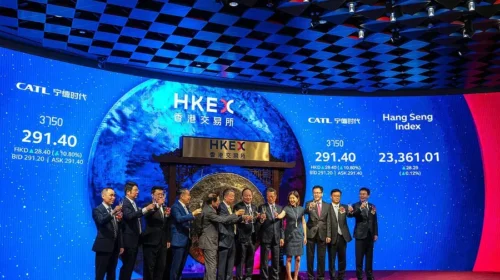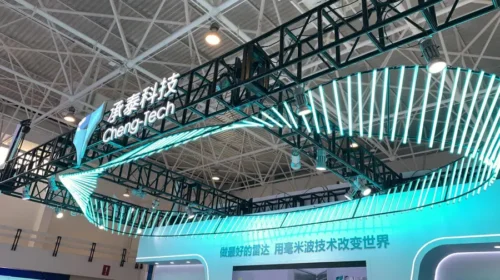BeiGene still bleeding red ink despite blockbuster drug

The Chinese developer of next-generation cancer treatments is raking in huge returns from its flagship drug, but R&D and sales costs keep rising
Key Takeaways:
- The Chinese biotech reported a 74% surge in annual revenue, driven by sales of its zanubrutinib drug, but offered no specific timetable for turning a profit
- Meanwhile, the rights for a second anti-cancer drug, tislelizumab, were returned to the company as its partners pulled out of an increasingly crowded market
By Molly Wen
In the cash-hungry biotech business, even a blockbuster drug with annual sales of more than $1 billion may not be enough to cure an excess of red ink.
Chinese drug maker BeiGene Ltd. (BGNE.US: 6160.HK; 688235.SH) amply illustrated this point in its latest set of annual results.
Driven by sales of innovative anti-cancer drugs, the company’s revenue surged 73.7% to $2.46 billion last year. Most of that turnover came from product sales, which jumped 74.5% to $2.19 billion, while partnership revenue rose 66.7% to $269 million.
The clear star of the earnings report was zanubrutinib, a drug developed by BeiGene to treat blood cancers that achieved blockbuster status with annual sales exceeding $1 billion.
But for all the success with its flagship product, the drug maker was not able to power all the way into the black. Its full-year operating loss shrank about 33% to $1.21 billion while its net loss narrowed to $882 million.
Undeterred by the continuing losses, investors welcomed the bumper sales and bullish outlook. BeiGene’s U.S.-listed stock rose 3.3% the day after the results and a further 12.1% in the next session, while on Hong Kong and Shanghai markets the company’s shares rallied for three straight days.
Zanubrutinib, marketed as Brukinsa in the U.S., accounts for much of the excitement. As a BTK inhibitor, the drug is one of a new generation of drugs that slow the growth of cancer cells. It was the first China-developed innovative drug to gain approval in the United States, initially to treat a type of lymphoma. Since its U.S. approval in 2019, the drug has been launched more widely overseas to treat a range of blood-related cancers. Sales of the drug rose 135% to $413 million in the fourth quarter of last year, pushing annual sales over the billion-dollar blockbuster threshold to $1.3 billion, a rise of 129% from 2022.
By the end of 2023, zanubrutinib had been approved in more than 65 markets, although U.S. demand remains dominant with annual sales there rising nearly 143% to $946 million.
Zanubrutinib contributes nearly 62% of BeiGene’s overall product revenue. But the company’s investment in R&D, the biggest in China’s pharmaceutical sector, has brought another star product to market, the injectable drug tislelizumab. The drug, which boosts the body’s immune defenses against cancer cells, has just been launched in Europe. It brought in $537 million in 2023, a year-on-year rise of almost 27%, although sales notably fell 12.5% in the fourth quarter to $128 million from the same period a year earlier.
Tislelizumab was the first Chinese-developed PD-1 drug to launch overseas, gaining European marketing approval in September 2023. U.S. regulators are expected to give the drug their green light later this year, although it is unclear whether the product can replicate the success of zanubrutinib in the highly competitive global market for PD-1 immunotherapies.
Commercial rights to the tislelizumab Injection were handed to other drug companies but have twice been returned. Pharmaceutical giant Novartis (NVS.US) obtained the right to develop, produce and launch the drug in the U.S., Canada and the EU in 2021, with an upfront payment of $650 million. But when the Covid pandemic slowed U.S. drug approvals, Novartis pulled out of the deal, citing a changing outlook for PD-1 antibodies. BeiGene decided to sell tislelizumab independently after reclaiming the drug rights.
Burning through cash
BeiGene recently predicted that its product revenue would grow faster than its expenses in 2024 and beyond, improving its operating position and cash flow. But the company did not give a specific timetable for the path to profitability.
With a blockbuster drug to its credit, why is the company still stuck in the red? The answer lies in the cost of developing and selling a plethora of drugs. BeiGene now has 17 commercial products and a pipeline of more than 50 candidate drugs, which are gobbling up cash for R&D, promotional activities and sales.
The company has been seeking to slow the rate of its spending. Its operating expenses rose 12.6% last year to $3.29 billion, a drop of 10 percentage points from the previous year’s growth rate. R&D costs came in at $1.78 billion, while administrative expenses rose to just over $1.50 billion.
According to an R&D progress report included in the earnings, three self-developed drugs already on the market are in Phase III clinical trials for treating additional conditions. The new anti-cancer pill sonrotoclax, which has yet to be commercially launched, is in four clinical trials including late-stage testing for the treatment of chronic lymphocytic leukemia. And more than 10 new molecular drugs are expected to reach the clinical stage this year, the company said. These cash-guzzling pipelines will surely push back the timetable for profitability.
As of the end of last year, BeiGene had cash and cash equivalents of $3.19 billion, down from $3.88 billion a year earlier. The biotech has a price-to-sales (P/S) ratio of 6.8 times, compared with 7.1 times for Junshi Biosciences (1877.HK; 688180.SH), which also markets a PD-1 drug overseas. Having proved its ability to develop novel drugs, BeiGene now needs to show it can come up with multiple blockbusters that will finally deliver profits for shareholders.
To subscribe to Bamboo Works free weekly newsletter, click here






